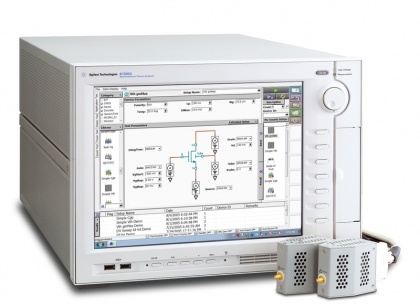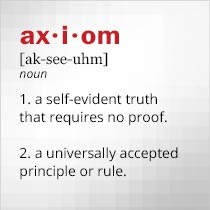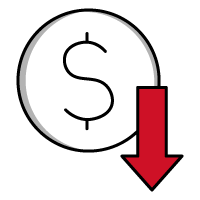Preparing Wide-Bandgap Devices for Higher-Power Applications
February 05, 2018
 |
Semiconductors are essential components in many electronic products, with many different kinds of semiconductors, such as transistors, diodes, and integrated circuits (ICs), performing important functions in a wide range of applications. Recently, wide-bandgap (WBG) semiconductors, notably those taking advantage of the electrical properties of gallium nitride (GaN) and silicon-carbide (SiC) substrate materials, have gained much attention for their contributions to power electronics products. But just what are WBG semiconductors, how are they different from semiconductors with narrower bandgaps, and what kinds of test-and-measurement approaches and solutions are needed to evaluate a WBG semiconductor? Please read on!
High-power semiconductor devices fabricated on certain materials, such as silicon carbide (SiC) and gallium nitride (GaN) substrates, typically have a bandgap in the range of 2 to 4 electron volts (eV) compared to the lower 1.0 to 1.5 eV bandgap of standard silicon semiconductor devices. Rather than behaving more as an “always on,” conducting device with the lower bandgap, these wider-bandgap devices offer characteristics that place them between a conductor and an insulator, with the good isolation needed for operating at higher voltages, frequencies, and temperatures than standard silicon semiconductor power devices.
Commercial WBG semiconductors are capable of operating at temperatures to +300ºC and higher, at RF/microwave switching frequencies, and at voltages to 600 V DC and higher—often as much as 10 times higher voltages than conventional-bandgap semiconductor devices. WBG semiconductors have been used in power circuits for green and blue light-emitting diodes (LEDs), and various other solid-state lighting, high-power conversion and power-supply circuits and systems. WBG semiconductors have the potential to trim as much as 90% of the losses in power-conversion circuitry compared to conventional semiconductor devices, allowing for the development of smaller and lower-costing power supplies and power converters compared to conventional power semiconductor technologies. In fact, developers of commercial systems that rely heavily on power electronics devices and systems, such as electric-vehicle (EV) and hybrid-electric-vehicle (HEV) chargers and LED devices, are counting on the benefits of WBG semiconductors for their future product advances. This growing popularity of WBG semiconductor devices is sharpening the focus on the importance of the test equipment and the measurements needed to characterize those WBG semiconductor devices.
Testing WGB Limits
Given the higher operating limits of WBG semiconductors, test equipment for characterizing these devices must be carefully chosen. While many of the tests using tunable/programmable current/voltage sources serve well for WGB semiconductor devices, the higher operating limits of a WBG device under test (DUT) often call for test equipment capable of such measurements as high-temperature forward and reverse bias testing, different forms of accelerated stress testing, and measurement ranges with higher voltages and currents than available in test equipment developed for standard bandgap semiconductor devices.
Manufacturers of test instruments well suited for characterizing WBG semiconductors for power electronics applications include California Instruments and their AC power loads, Chroma and their DC power sources and loads, Keithley Instruments and their source measure unit (SMU) instruments, and Keysight Technologies with their SMUs and semiconductor parametric analyzers. For example, the Chroma 62000P Series programmable power supplies feature large voltage and current ranges along with the capability of providing constant power to a DUT over a wide range of combinations of current and voltage.
The Keithley 2651A is actually a combination of a power supply, current source, arbitrary waveform generator, pulse generator, and a digital multimeter (DMM) in a compact enclosure. It provides as much as 2000-W of pulsed power by means of a pulsed voltage range of -40 to +40 V DC and ±50 A. When higher test levels are needed, two instruments can be connected in series or parallel to provide as much as ±100 A current or ±80 V DC voltage. The higher-power model Keithley 2657A can source or sink as much as 180 W of pulsed or continuous DC power, with a voltage range of ±3000 V at 20 mA or ±1500 V at 120 mA.
On the analysis side, Keysight Technologies provides a variety of analyzers for evaluation of high-power semiconductor devices using pulsed and continuous voltage and current. For example, the Keysight B1500A Semiconductor Device Analyzer performs pulsed and CW current-voltage measurements as well as capacitance measurements with impressive accuracy and resolution. It can even control automatic switching between current-voltage and capacitance-voltage measurements with the aid of an optional measurement program card. When considerably higher voltage and current test ranges are needed, the Keysight Technologies B1505A Power Device Analyzer/Curve Tracer can evaluate WBG and other semiconductor devices at pulsed and continuous voltages to 10 kV and currents to 1500 A. It includes an oscilloscope view for visual inspection of current and voltage pulsed waveforms at those high power levels.
Due to the high/wide temperature capabilities of WBG semiconductor devices, programmable temperature test systems such as the ThermalAir TA-5000A temperature control system from MPI Thermal (a division of MPI Corp.) may prove to be invaluable when characterizing WBG semiconductor devices for many requirements over temperature. The TA-5000A provides easily adjustable temperature change and ramp rates over a total temperature range of -80 to +225ºC, but also features extremely stable DC temperature control with 0.1ºC-resolution and ±1.0ºC temperature accuracy.
These are but a small sample of the instruments available for characterization and evaluation of WBG semiconductor devices for power electronics application. For additional information on any of the models mentioned, or for guidance on additional measurement solutions for testing WBG semiconductor devices, please visit the Axiom Test Equipment website at www.axiomtest.com or contact Axiom Test Equipment’s sales department at sales@axiomtest.com or by calling 760-806-6600.
Back to BLOG








